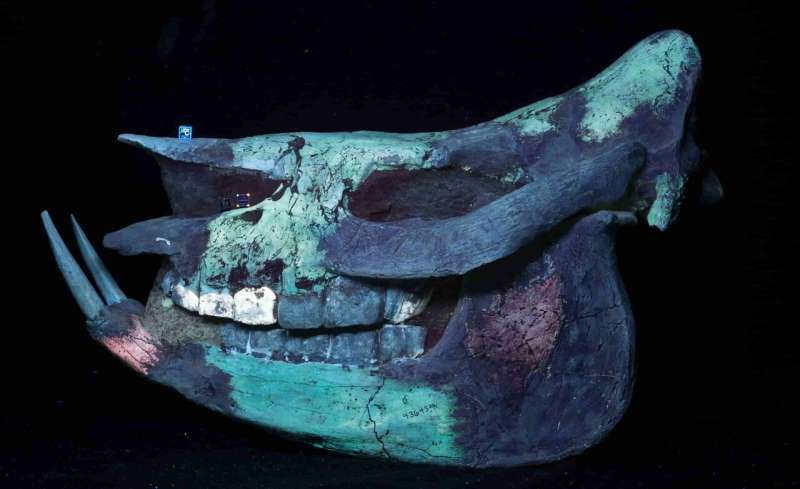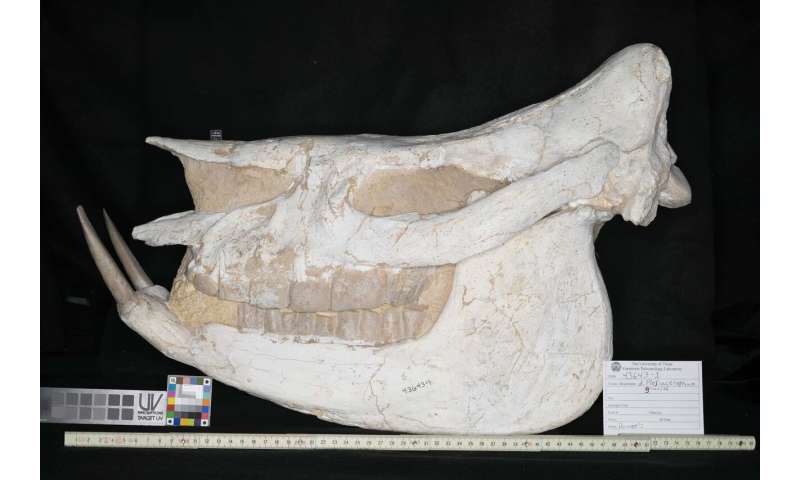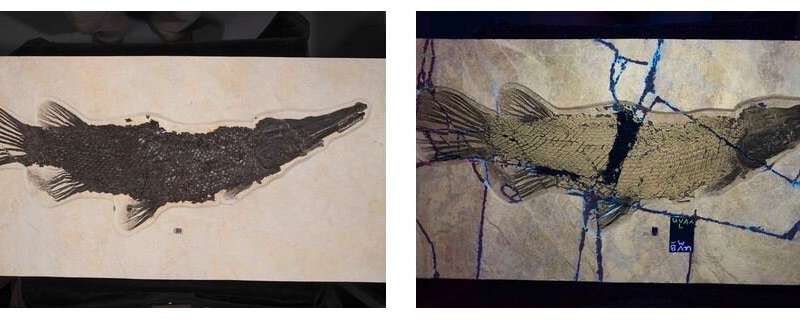New photography technique brings hidden history of fossils to light

We've all seen and marveled at them: perfect fossils of gargantuan dinosaurs or other exotic creatures from the ancient world. But the truth is, sometimes there's more than meets the eye. From signs of soft tissue and the remains of million-year-old meals, to delicate fossilized anatomy lost in the surrounding rock, to paint and plaster artfully applied by human preparators—many fossils have scientifically important features that are hiding in plain sight.
A research associate at The University of Texas at Austin is pioneering a new method for bringing these overlooked treasures into vivid detail. Called progressive photonics, the technique involves shooting photos of specimens under a range of lighting environments. The goal of the technique is to broaden the kind of information that can be extracted from fossils by diversifying and improving photo documentation.
The results can be stunning.
-

The splashes of color that appear under UV light are nowhere to be seen under normal lighting. Bone and plaster blend perfectly together – making for a pretty skull, but a lousy scientific specimen. Credit: University of Texas at Austin -

Putting fossils under new lights offers new views. No one knew that this tiny fossilized shark, only a few centimeters long, had its gill anatomy preserved until it was examined under UVB illumination (right). In turn, a picture taken under polarized light (left) shows the outline of the body and vertebrae, which is further enhanced when the shark is viewed under oblique visible light (middle). Credit: University of Texas at Austin -

UV light is also the key to seeing the bright blue adhesive crisscrossing this fossil gar fish and filling its middle (right). The fossil looks pristine under normal lighting conditions (left). But UVA illumination shows that the fish was found in pieces. The collection that owns the specimen was well-aware of the gar’s fractured past. The picture proves that even for the most complete looking specimens, there can be more than meets the eye. Credit: University of Texas at Austin
More information: More aboout progressive photonics: www.jsg.utexas.edu/news/2019/0 … of-fossils-to-light/
Michael J. Eklund et al. 2018. Progressive Photonics: Methods and applications of sequential imaging using visible and non-visible spectra to enhance data-yield and facilitate forensic interpretation of fossils. Journal of Paleontological Techniques 20:
1-36. www.jpaleontologicaltechniques.org/pasta3/JPT%20N20/Pdf/JPT_n020_Out.pdf
Provided by University of Texas at Austin




















